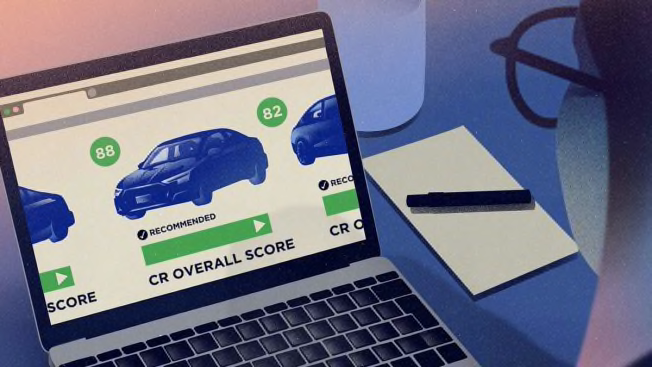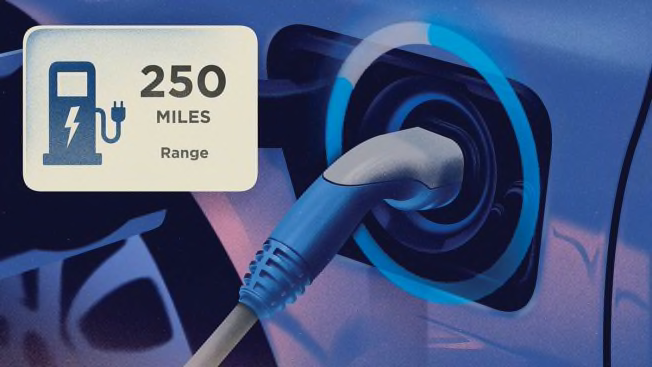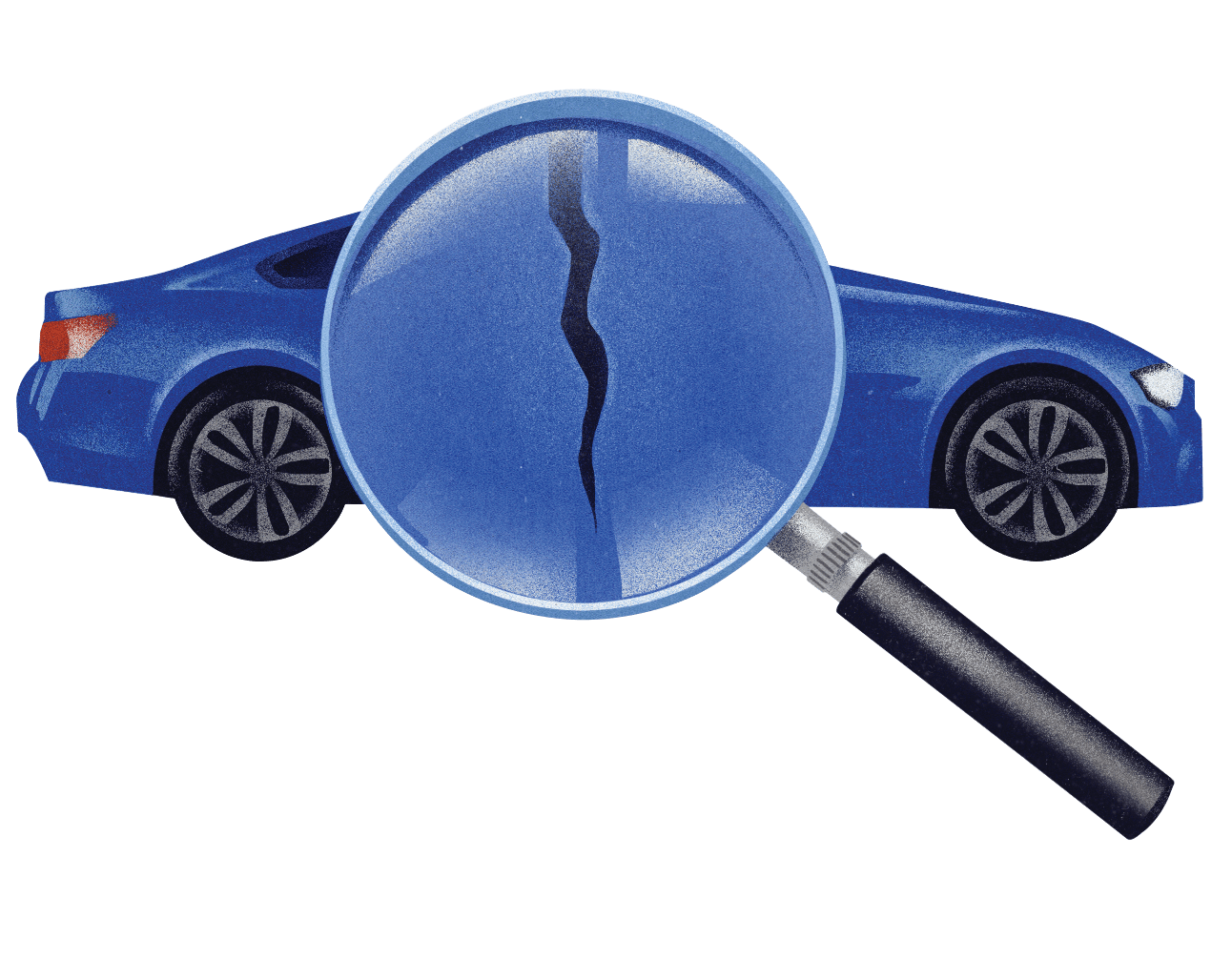7 Questions to Ask Before You Buy a Car
What to know before you head to a dealership, and what to ask once you’re there
Senior Multimedia Content Creator, Autos
 By Jon Linkov
By Jon LinkovDeputy Content Editor, Autos
Updated April 5, 2025

Finding the right car and then negotiating the best price can be a whirlwind experience. So what do people who have recently purchased a new car wish they had considered more carefully? We asked CR followers on social media and got a whole host of suggestions, including how to beat dealership sales tactics, learning the cost of maintenance, trying out the back seat, and much more. Then we turned to the pros at our Auto Test Center—who, in addition to their expertise, anonymously purchase 40 to 50 vehicles a year for Consumer Reports to test—for the advice they give family and friends.
Our Car Testing Goes the Extra Mile
Get exclusive ratings and reliability scores from CR – testing cars since 1936.
JoinIn this article
In this article
“It’s more important than ever to do your homework before purchasing a car or truck,” says Jake Fisher, senior director of auto testing for CR. “With record prices, people are holding on to their cars longer than ever, so the decision you make should be one you’re going to be happy with.”
Between readers’ experiences and our know-how, we can prepare you for anything that might come your way the next time you want to buy a car. Ready to gain some car-buying superpowers? Read on.
What to Find Out Before You Go to a Dealership
Which Safety Systems Are Included
Why it’s important: Even though active safety systems prevent crashes, they aren’t always included as standard equipment. Some may be grouped into different option packages. Automakers often give them baffling names, too: Audi calls its automatic emergency braking (AEB) system Pre Sense Front, while Volvo calls its blind spot warning (BSW) system Blind Spot Information System (BLIS).

More on Car Buying
Best Deals on Fuel-Efficient Cars and SUVs
How to Beat the ‘Four Square’ and Other Car Dealership Sales Tactics
How to Decide if a Hybrid, Plug-In Hybrid, or Fully Electric Car Is Right for You
The Cost of Car Ownership Over Time
CR’s Build & Buy Car Buying Service
Steps to Take
Start your research online. Click on the models on CR’s New Cars A-Z page to find out which vehicles have systems you’re interested in and whether they’re standard or optional. Then go to automaker websites to build and price the option packages and trim levels you’ll need to get the safety features you want.
Double-check once you find the exact car you want. “Call the dealership and ask a salesperson which features are on the specific car you plan to buy,” says Maddie McCarty, an automotive engineer at CR. “Then cross-check the window sticker to make sure the features you want are listed.”
Plan for a safety test drive. Write down a list of the safety-related questions that matter to you so that you remember to get answers once you’re at the showroom. Does the car have automatic emergency braking? How clear is the backup camera image? What kind of alert do you get if you engage the turn signal when a car is in your blind spot? Can you customize the sensitivity of these systems?
Whether Your Next Car Will Be Gas-Only, Hybrid, or Electric
Why it’s important: Though hybrids and EVs cost more up front, “the higher purchase price can often be offset by lower operating costs,” says Chris Harto, senior energy policy analyst at CR. As you budget how much you can afford to pay for a new vehicle, it can help to know what your savings on operating costs might look like.
Key Considerations
Hybrids can earn back their higher cost in as little as two years. “For many Americans, the monthly fuel savings can offset a slightly higher monthly payment, saving money from Day 1,” Harto says. Learn more about hybrids in our guide to hybrid cars.
Plug-in hybrid electric vehicles save the most if you take short trips. That’s because they have an electric-only range that’s usually between 20 and 50 miles. Beyond that, the gas engine kicks in. So check the window sticker to see what kind of fuel economy you’ll be getting when the car is in hybrid mode. Some PHEVs qualify for federal tax credits, too.
In addition to their other benefits, electric vehicles can offer serious savings. How much (if any) depends on what kind of car you’re purchasing and where you live. Our guide to EV ownership costs can help you decide. EVs may also be eligible for tax savings of up to $7,500, but qualifying for a federal tax credit requires meeting certain conditions, which we’ve outlined in our guide to EV tax credits. See our Electric Vehicle Savings Finder to check.
For several reasons, leasing an EV may be a better option than buying one. It’s easier to get the federal tax credit when leasing, and you don’t have to worry about volatile prices on new EVs or getting stuck with outdated technology.

Whether It Has Essential ‘Extras’
Why it’s important: Some vehicles are specifically designed to do certain tasks, such as towing a camper or driving off-road. You need to know what the car you plan to buy is capable of before you head to a dealership or you could make an expensive mistake. Paying extra for capabilities you don’t need is a waste of money.
Steps to Take
Know how much it can tow. Even vehicles that look exactly the same on the outside can have a towing capacity that varies by thousands of pounds, says John Ibbotson, CR’s chief mechanic. Much depends on option packages, trim levels, and engine choices. Calculate how much you need to tow before you buy, and make sure the vehicle you’re choosing will be up to the task. Check the car’s manual and ask a salesperson to help you.
Think about the road conditions you’ll encounter. Rugged four-wheel-drive trucks and SUVs are impressive machines great for taking off the beaten path. But if it’s just inclement weather you’re worried about, you probably don’t need such a robust vehicle—or its added weight and lower gas mileage. An all-wheel-drive system—or even a front- or rear-wheel-drive vehicle with winter tires for cold weather and snow—should do the trick depending on your situation, says Ryan Pszczolkowski, tire program manager at CR.

What to Know About Used Cars
Because every used car is different, buyers face more potential pitfalls than they do when purchasing a new vehicle. Here are three things to keep in mind during your search.
The length of the warranty: Ask if there’s any original warranty coverage left on the car and, if so, how long it will last and for which components. If you want more coverage, consider buying a certified pre-owned car, which typically has additional years of warranty coverage direct from the manufacturer.
Whether it has been in a crash: A car that has been fixed after a serious crash can have a lower resale value, and hidden safety and performance issues. Not all crashes show up on a vehicle history report, so look for areas of the body where the paint doesn’t match the rest of the car, crooked headlamps and trim pieces, and uneven gaps between body panels.
If it needs new tires: Are the tires the right size, speed rating, and load rating for the vehicle? Tires (including the spare) older than 10 years should be replaced.
Find This Out at the Dealership
How Much Maintenance Will Cost
Why it’s important: A lot of new cars come with some complimentary maintenance, including free oil changes and tire rotations. But others don’t, and you’ll need to factor in the cost of keeping your new car on the road.
Steps to Take
Get it in writing. Find out what—if anything—is free. Are oil changes covered? Tire rotations? Are there limits to how many times you can bring your car in? How long is the coverage?
Get the recommended maintenance schedule. You can find it in the owner’s manual or on the manufacturer’s website. Gone are the days of needing yearly tuneups and oil changes every 3,000 miles. “Newer cars need these services less often,” Ibbotson says. “But it’s just as or even more important to do these maintenance tasks on time.”
Find out whether you have to get your car serviced at a particular dealership. If complimentary maintenance is provided by the automaker, you can go to any dealership for your brand. If it’s a perk from your specific dealer, you may have to return there.
Be wary of package deals. If free maintenance isn’t included, some dealerships will try to sell you a basic maintenance package for one up-front price. Do the math based on the service intervals listed in the owner’s manual. You might be better off paying à la carte or going to an independent shop you trust.

Whether There’s Enough Seating and Storage
Why it’s important: Automakers love to boast about how many cubic feet of passenger and cargo space a vehicle has. But numbers won’t tell you whether a car’s sloping roofline will cramp rear passengers’ headroom or if a small trunk opening will make it hard to load your gear.
Steps to Take
Check out the rear seats by sitting in them. See how easy they are to get into and out of, and whether there are any obvious problems with headroom and legroom. If there’s a third row, find out whether it’s big enough for the passengers you expect to sit back there.
Try out the trunk. If there’s a specific item you absolutely need to fit—say, a folding wheelchair, an empty pet carrier, or a stroller—take the item to the dealership with you and try it for yourself. Is it easy to lift and load?
Be smart about child car seats. If you have young children, take your car seats with you to see how easy they are to install securely, and how well the rest of your family fits with them. Some second rows can fit three car seats across, but in others, a single child car seat might impinge on the neighboring passenger’s space. You also want to make sure that you and your front passenger have enough room in front of the car seats to adjust your seat comfortably. “All car seats are different, so the best way to find out what fits is to bring your own,” says Emily Thomas, PhD, associate director for auto safety at CR.
How the Infotainment Tech Works for You
Why it’s important: As cars become more technologically advanced, drivers face a greater learning curve to master various systems. Don’t get stuck with a system that’s frustrating to use. Get familiar with the tech on your test drive.
Steps to Take
Check the basics. Can you figure out the buttons, menus, and settings? “Systems that are easy to learn in the beginning tend to be less frustrating in the long run,” McCarty says. Check out CR’s list of the best and worst infotainment systems according to our members.
Don’t make any assumptions about the car’s technology. Each year fewer models have CD players, older-style USB-A charging ports, and AM radio tuning.
Double-check the options list on the car you’re buying. Because of supply constraints, some automakers are deleting features that usually come on certain cars, such as satellite radio and parking assistance. “You can’t always rely on a website or brochure to know what will be included anymore,” Fisher says. “If a feature is important to you, confirm that it’s listed on the window sticker.” You might not be able to add it later.
If you have questions later, will someone be there to help you? Some dealerships will help you pair your phone and do other tech tasks.
Whether to Wait for What You Want
Why it’s important: Do you like the car you test-drove but wish it had different options, more safety features, or a different exterior color? It might be worth it to wait for a custom order or expand your search radius.
Steps to Take
Shop around. “If you can’t find the exact car you want locally, try expanding your search,” says Gabe Shenhar, who supervises car buying for CR’s auto-testing program. “A dealership in another area may be able to ship it to you.” Have the dealer email you a picture of the window sticker. Scrutinize it to make sure the car has every item you want. “Negotiate the price and complete as much paperwork over the phone or email as you can. Then you only have to arrive at the dealership to take delivery and sign some papers.”
Put in a custom order. If you have the time, it may be worth ordering a new car exactly the way you want it, especially if you’re looking for a particularly popular model that’s in short supply on dealer lots. Just be aware that the wait could be a few months or longer, depending on the vehicle. So make a plan. For example, if your lease is running out, ask the dealer whether you can extend it until your new car is ready.

What You Should Know About the Finance Office
You might think that the hard part is over after you’ve agreed on a price. But now it’s time to sign the official paperwork. That usually takes place in the finance and insurance (F&I) office, even if you’re not taking a loan. It’s also where the dealership will try to sell you on extras, which add to the cost of your vehicle.
Get the “out the door” price before you sign. Taxes and fees can add thousands to the starting price of a new vehicle, and many of these charges aren’t negotiable. Don’t get caught off guard. Ask the salesperson to itemize these numbers clearly from the start, so you can keep track of what you’re paying and get the best deal.
Do the math. Before you sign anything, bring a calculator and check the dealership’s numbers. You might find an error that would have cost you hundreds.
Don’t buy extra coverage you hadn’t planned on. You can almost always add extended warranties or tire protection after the fact if you decide you want them.
Editor’s Note: This article has been updated since it appeared in the August 2022 issue of Consumer Reports magazine.
For 85 years, we have been fighting to make sure you get a fair deal and safe products. Our scientists, engineers, journalists, and researchers work tirelessly to bring consumers like you trusted information, so you have the answers you need. Not just so you can buy an appliance or car with confidence, but also so that you can know what’s safe for you and your family. As a nonprofit organization, we rely on the support of our members to help raise the standards of the products and services we use every day. Every donation, no matter the size, contributes to this work. Please support Consumer Reports today — even a gift of as little as $3 will help. Thank you.
Select a Donation Amount






Keith Barry has been an auto reporter at Consumer Reports since 2018. He focuses on safety, technology, and the environmental impact of cars. Previously, he led home and appliance coverage at Reviewed; reported on cars for USA Today, Wired, and Car & Driver; and wrote for other publications as well. Keith earned a master’s degree in public health from Tufts University. Follow him on BlueSky @itskeithbarry.bsky.social.

Jon Linkov is the deputy auto editor at Consumer Reports. He has been with CR since 2002, covering varied automotive topics including buying and leasing, maintenance and repair, ownership, reliability, used cars, and electric vehicles. He manages CR’s lineup of special interest publications, hosts CR’s “Talking Cars” podcast, and writes and edits content for CR’s online and print products. An avid cyclist, Jon also enjoys driving his ’80s-era sports car and instructing at track days.
Our car testing goes the extra mile
Get exclusive ratings and reliability scores from CR, testing cars since 1936.



